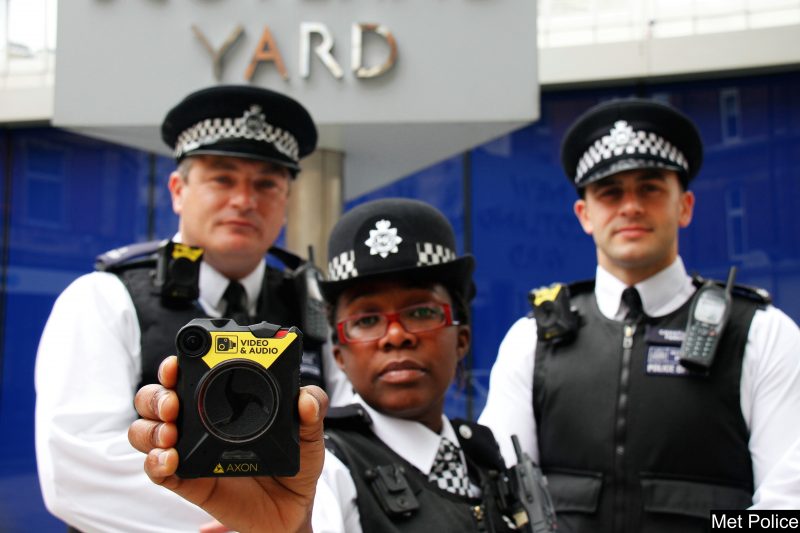The shooting this week of a 40-year-old Australian woman, Justine Damond, by a Minneapolis Police Department officer has highlighted once again the shortcomings with Body Worn Cameras (BWC). In a case where everyone is searching for answers as to why a woman in her pyjamas was shot dead by a police officer, the body worn cameras, issued to both the officers in the vehicle and which should have provided the answers, were not active. Continue reading
Month: July 2017
Virgin trains did not breach data protection laws when it published CCTV footage of Jeremy Corbyn, but it did still break the law
StandardWhen is a breach not a breach?
The ICO (the UK’s Information Commissioner’s Office) has ruled that virgin trains did not breach data protection laws when it published CCTV footage of Jeremy Corbyn on board one of it’s trains as it determined that in this case it had a “legitimate interest” to do so. Where it did fall foul of the law is when it failed to pixilate the faces of three passengers who were captured in the footage but whose presence was not relevant to the case. Follow the link above to read the full article by Steve Eckersley, Head of Enforcement at ICO.
With GDPR set to replace national data protection laws in May 2018 this case serves as timely reminder that anyone operating video surveillance systems within Europe, or indeed anyone, wherever they are located, processing data on behalf of European customers, will be obliged to comply with these regulations and ensure that the way they collect, store, process and publish video and related surveillance data (e.g. facial recognition) must adhere to GDPR or else they risk a hefty fine of up to 4% of global turnover or €20 million.
More than 70% of Burglaries in England & Wales go unsolved
Linkhttp://www.bbc.com/news/uk-england-40131277
Article on the BBC news today shows that more than 70% of burglaries in England and Wales are not solved. This is a similar rate to that reported recently by Ireland’s national police force, An Garda Síochána (see my previous article on this subject).
Police forces are increasingly forced to make decisions on where to best apply limited resources and without an identified suspect most are choosing not to further investigate burglaries. Given that these types of crimes are unlikely to be given a higher priority or more investigative resources any time soon, video surveillance and other safe city technologies are going to have to play an increasingly important role in reducing this type crime and increasing detection rates.
IFSEC 2017 – a few after event thoughts and insights
Standard
In June 2017 we saw IFSEC 2017 hosted at Excel London as part of a series of shows and expos dealing with security, safety, protection and management. What was particularly interesting was the creation of a new event at IFSEC focusing on Border and Infrastructure protection, a subject that perhaps would traditionally have been covered by the large defence expos. Whilst perhaps still in its infancy this year, you can see the logic in bringing this subject into IFSEC with the surveillance technology and PSIM. Continue reading
Using big data analytics to produce case-screening checklists for crimes
Standard [embedit snippet=”photo-credit-dariusz-sankowski”]
[embedit snippet=”photo-credit-dariusz-sankowski”]
There is a lot of focus these days on how big data and analytics can be used to predict and prevent crime, as well as to aid in solving crimes when they occur. In an article titled “A solvability-based case screening checklist for burglaries in Ireland” published in the latest edition of the European Police Science and Research Bulletin, we see a different approach to the use of data analytics in law enforcement. The article, written by Stephen Shannon and Barry Coonan of An Garda Síochána, discusses their study into how data analysis could be used to identify which cases are most likely to be solved and hence should be investigated. From this study they develop a screening checklist for burglaries based on 49,534 cases reported in 2014, which if it had been applied, may have resulted in a 50% improvement in detection rates.
The study presents some interesting findings on the potential use and benefits of analytics to develop statistical case screening. Whilst it also indirectly validates the current efforts of the security industry in developing ever better CCTV and video analytics solutions, for me it also raises some questions on the broader impact of case screening, such as the possible risk in actually harming the public’s perception of the police, increased insurance premiums for those whose crimes are not likely to be investigated, as well as the risk of simply moving crime elsewhere such as to the most vulnerable in society. Continue reading

